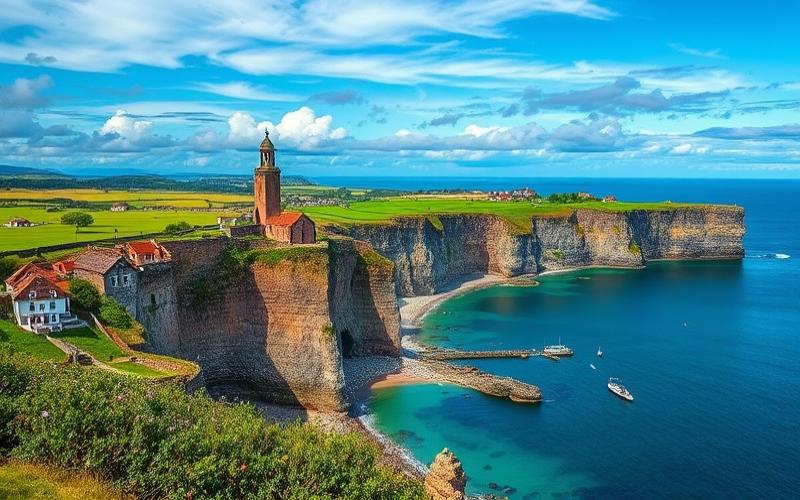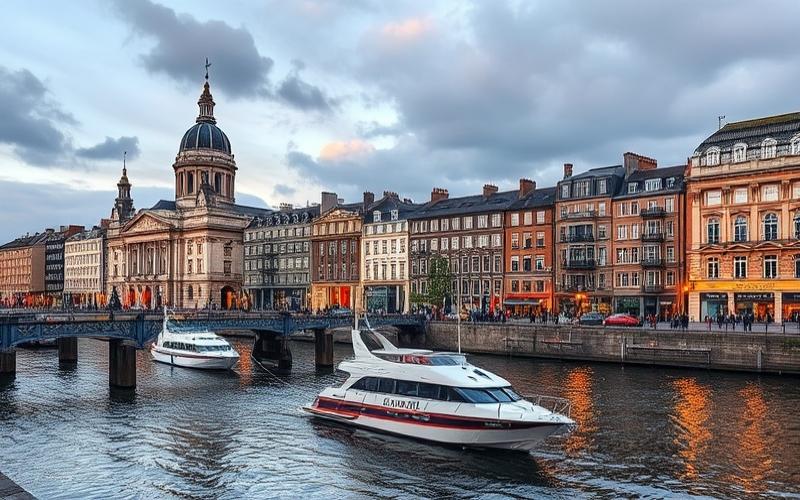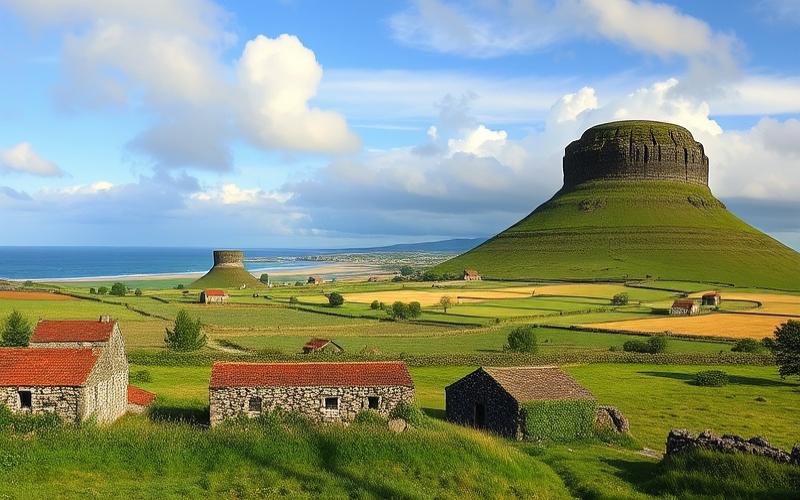
 Published on and written by Cyril Jarnias
Published on and written by Cyril Jarnias
Ireland, with its lush landscapes, medieval castles, and cozy pubs, attracts millions of visitors from around the world each year. This growing tourism success has significant repercussions on the local real estate market, profoundly transforming certain regions of the country.
Tourist Gems That Captivate Investors
The Irresistible Appeal of Dublin and the West Coast
The Irish capital Dublin remains the country’s premier destination, with its festive atmosphere and rich cultural heritage. Historic neighborhoods like Temple Bar and the areas around Trinity College are particularly popular among tourists and real estate investors.
On the west coast, the magnificent landscapes of Connemara and the Cliffs of Moher also attract numerous visitors. Cities like Galway or Westport have become highly sought-after destinations, both by tourists and buyers of second homes.
The Rise of Rural Tourism
Inland areas are not left behind, with growing interest in rural tourism and stays in authentic Irish cottages. Counties like Kerry, Cork, or Kilkenny are seeing an increasing influx of visitors seeking authentic experiences, which stimulates the local real estate market.
Good to Know:
The most touristy regions of Ireland are experiencing strong real estate pressure, with increasing demand for properties located in the most attractive areas.
When Tourism Success Drives Prices Sky-High
A Widespread Increase in Popular Areas
The influx of tourists and investors has a direct impact on real estate prices in the most visited regions. In Dublin, prices have increased by nearly 40% over the past five years, reaching record levels. In coastal cities like Galway or Cork, the increase exceeds 30% over the same period.
Growing Disparities Between Regions
This price surge is widening the gaps between tourist areas and the rest of the country. While some rural regions experience relative stagnation, prices are soaring in the most sought-after destinations, creating tensions in the local housing market.
Good to Know:
In some highly touristy areas, real estate prices have doubled in less than 10 years, making homeownership increasingly difficult for local residents.
The Gold Rush of Seasonal Rentals
The Explosion of Short-Term Rentals
The development of peer-to-peer rental platforms like Airbnb has profoundly transformed the Irish real estate landscape. In major cities and tourist areas, many property owners are turning to seasonal rentals, which are more profitable than long-term leases.
Consequences on the Traditional Rental Market
This trend is not without consequences for the traditional rental market. In cities like Dublin or Galway, the scarcity of properties available for long-term rent leads to rising rents and increasing difficulties for permanent residents to find housing.
Good to Know:
In some tourist neighborhoods of Dublin, over 50% of available housing is now offered as seasonal rentals, to the detriment of the traditional rental market.
Towards Market Regulation?
Faced with these developments, Irish authorities are beginning to take measures to regulate the real estate market in tourist areas. Restrictions on short-term rentals have been implemented in Dublin, and other cities are considering similar measures.
The Irish government is also exploring schemes to facilitate housing access for local residents in the most strained areas, in order to preserve the social and economic balance of these regions.
Good to Know:
New regulations are under consideration to limit the impact of tourism on the Irish real estate market and preserve housing access for permanent residents.
The rise of tourism in Ireland has undeniably energized the country’s real estate market, offering new investment opportunities and stimulating the local economy. However, this evolution also raises significant challenges in terms of housing access and preserving the social fabric in the most sought-after regions.
The challenge for Ireland will be to find a balance between tourism development and maintaining a real estate market accessible to all, in order to sustain the country’s attractiveness while preserving its quality of life.
Disclaimer: The information provided on this website is for informational purposes only and does not constitute financial, legal, or professional advice. We encourage you to consult qualified experts before making any investment, real estate, or expatriation decisions. Although we strive to maintain up-to-date and accurate information, we do not guarantee the completeness, accuracy, or timeliness of the proposed content. As investment and expatriation involve risks, we disclaim any liability for potential losses or damages arising from the use of this site. Your use of this site confirms your acceptance of these terms and your understanding of the associated risks.


















